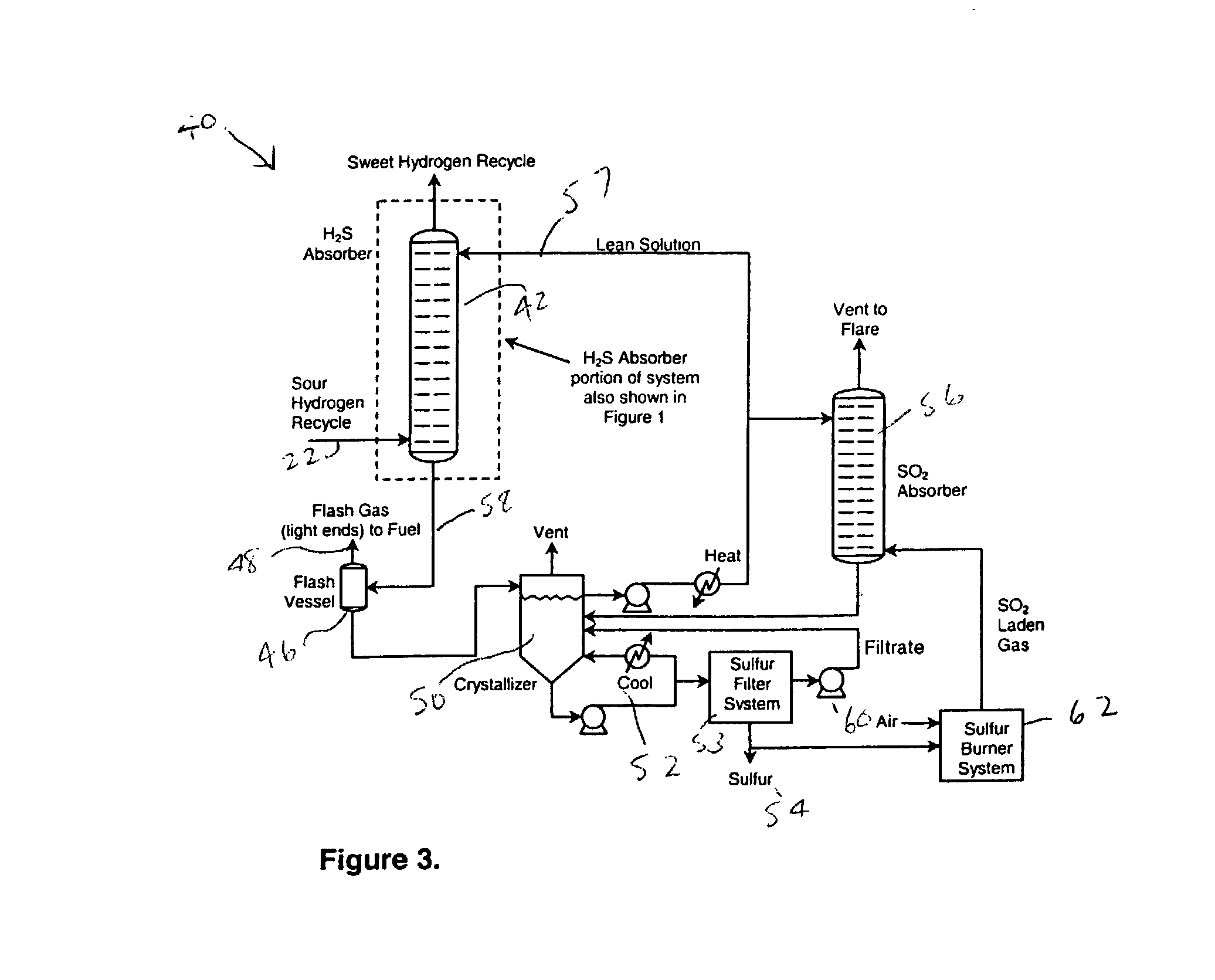Process for recovering sulfur while sponging light hydrocarbons from hydrodesulfurization hydrogen recycle streams
a technology of hydrodesulfurization and hydrocarbon recycling, which is applied in the direction of sulfur preparation/purification, separation processes, gaseous fuels, etc., can solve the problems that the solution of water scrubbing does nothing to address the buildup of methane and other light hydrocarbons in the hydrogen recycle loop, and achieves large seasonal turndown ratios, limited sru capacity, and tremendous benefits
- Summary
- Abstract
- Description
- Claims
- Application Information
AI Technical Summary
Benefits of technology
Problems solved by technology
Method used
Image
Examples
example i
[0023] Some of the advantage flowing from use of a method and system based on the FIG. 3 arrangement were demonstrated by examining a diesel hydrotreater application at a 215,000 barrel per day (BPD) refinery. The refinery would need to install a hydrogen plant, a hydrotreater, and a sulfur recovery plant. Compared to traditional amine treating of the hydrogen recycle stream, the nonaqueous sulfur recovery approach used herein was calculated to save the refinery over $1 million per year in hydrogen costs alone (based on $2.50 / MMBtu natural gas prices). Capital costs for the nonaqueous sulfur recovery approach were estimated at approximately 40% to 50% lower than amine / Claus / tail gas treating. Further, the nonaqueous sulfur recovery system has essentially infinite turndown for accommodating seasonal swings in diesel or gasoline demand.
[0024] Table 1 compares the composition for the hydrogen purge stream that would be necessary with a diethanolamine (DEA) treating system with composit...
PUM
| Property | Measurement | Unit |
|---|---|---|
| pressure | aaaaa | aaaaa |
| pressures | aaaaa | aaaaa |
| pressures | aaaaa | aaaaa |
Abstract
Description
Claims
Application Information
 Login to View More
Login to View More - R&D
- Intellectual Property
- Life Sciences
- Materials
- Tech Scout
- Unparalleled Data Quality
- Higher Quality Content
- 60% Fewer Hallucinations
Browse by: Latest US Patents, China's latest patents, Technical Efficacy Thesaurus, Application Domain, Technology Topic, Popular Technical Reports.
© 2025 PatSnap. All rights reserved.Legal|Privacy policy|Modern Slavery Act Transparency Statement|Sitemap|About US| Contact US: help@patsnap.com



